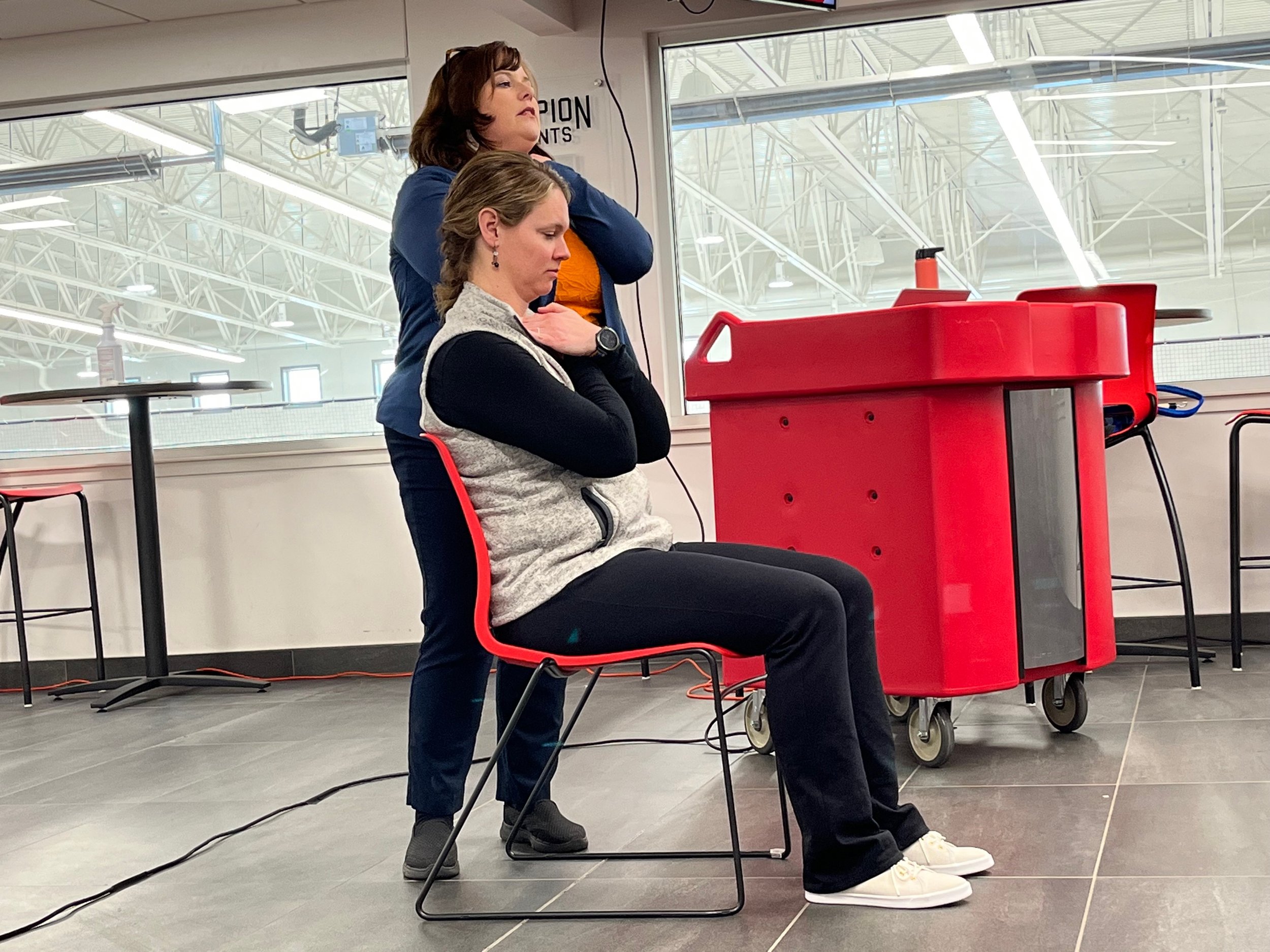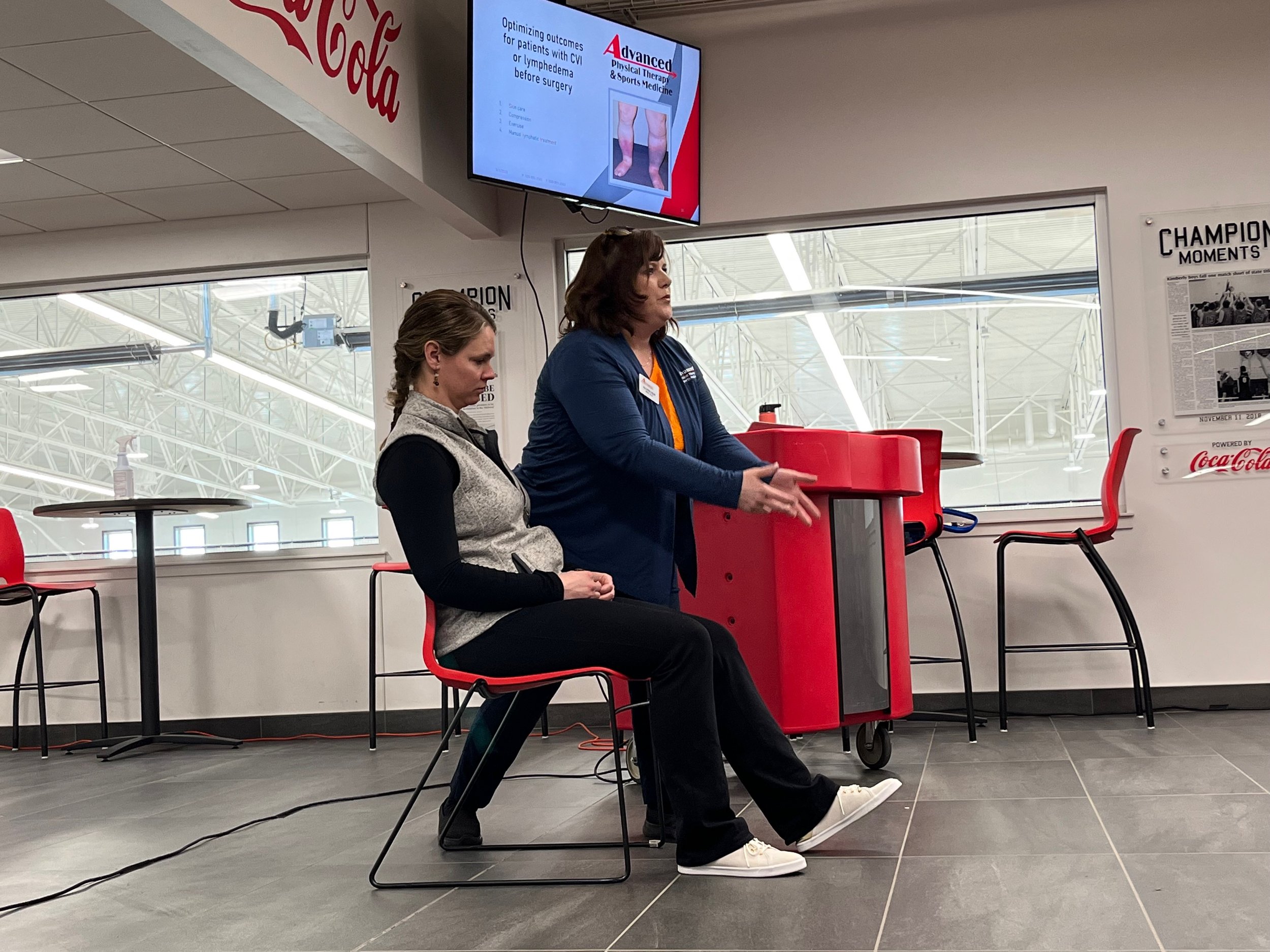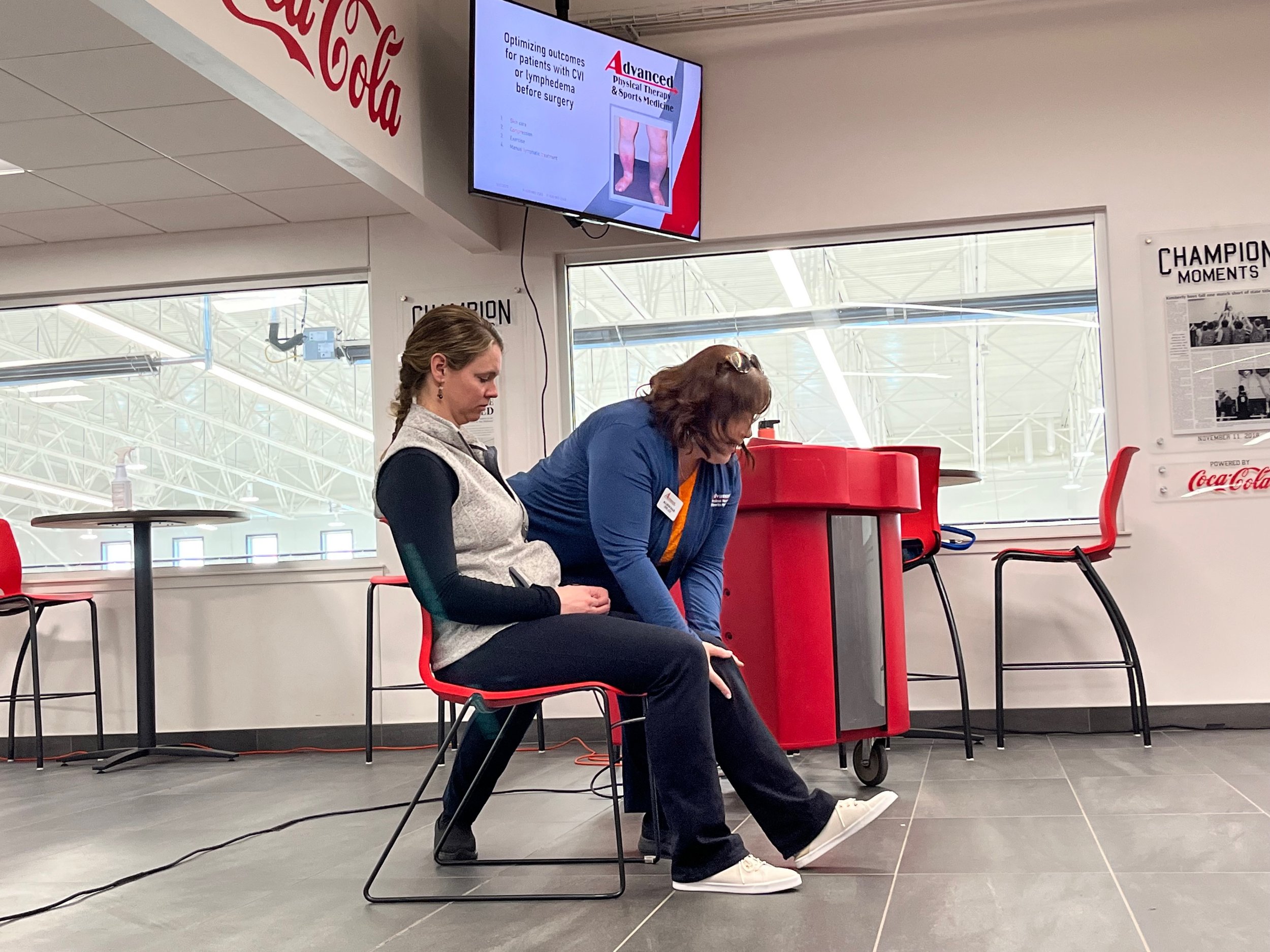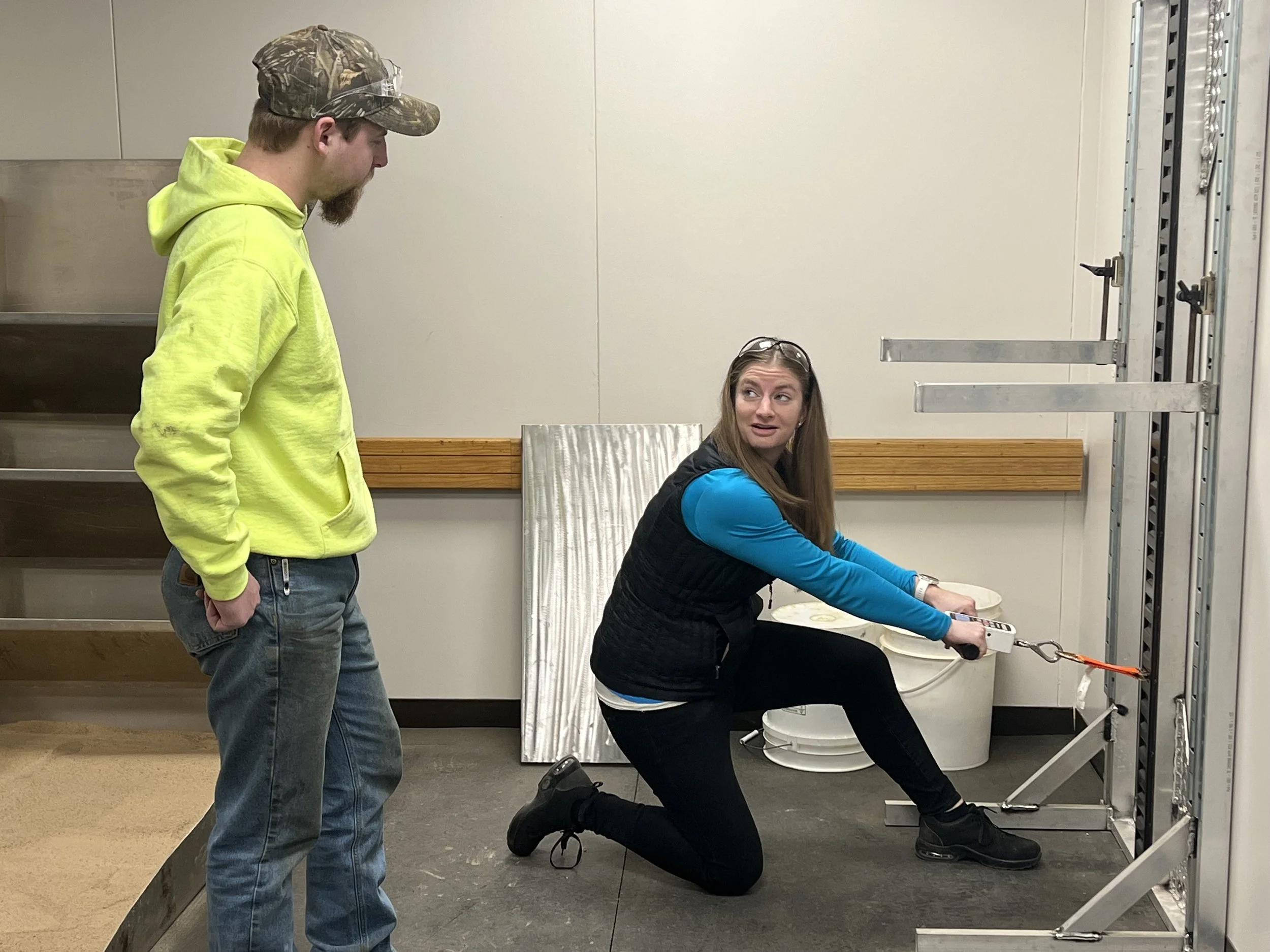As the chair of the Awards & Scholarships Committee for the Wisconsin Athletic Trainers’ Association (WATA), Anna Linstedt relied on input from the Board of Directors to identify a candidate for the organization’s Distinguished Service Award, given annually to a servant leader in recognition of their dedication to the advancement of the athletic training profession.
“We have a name,” said WATA President Keith Owsley.
Linstedt listened for it. There was a long pause.
“What are you waiting for?” she said.
“I really don’t know how to go about doing this,” he said.
“Just fill out the nomination form, send me a letter, get me their curriculum vitae,” said Linstedt. “It’s not that hard, Keith.”
“Well, we’re nominating the committee chair,” came the response.
The realization that Linstedt herself was the recipient of the award caught her off guard. A question immediately popped into her head; it came out of her mouth almost as readily.
“Don’t you have a better name?” Linstedt asked.
The President answered without hesitation.
*************************************************************************************
The path that led Linstedt to this moment can be traced back to her college days, as one of WATA’s founding fathers was her instructor. He impressed upon Linstedt the vital importance of participating in the association, and she’s been involved ever since, from member to committee leader to regional representative to President, leading the organization from 2020-2022.
The challenges would begin for Linstedt even before she took office, as three weeks prior to the beginning of her term the decision was made to cancel WATA’s annual meeting, the most important event on the calendar and the group’s main revenue generating source.
This would be the first of many disruptions during Linstedt’s unprecedented tenure, but such was the nature of first great pandemic of the 21st century.
Despite the inability to meet in person with lobbyists, state government officials, and even her own staff, Linstedt spearheaded WATA’s effort to achieve their goals, one of which was the streamlining of athletic trainer license requirements.
“That was a huge win for us,” said Linstedt.
Another effort was to gather and present data to lawmakers to ensure reimbursement rates for athletic trainers were equal to those of physical therapists. Working with insurance companies, WATA was able to provide the state legislature evidence from more than 90,000 episodes of care that demonstrated
rehabilitation processes followed by trainers and therapists were the same and should be compensated as such.
“A year later,” rued Linstedt, “this still hasn’t crossed the goal line.”
With the cancellation of the annual meeting and the concomitant reduction in capital, Linstedt and her team needed to go through the budget with a fine tooth comb, determining the absolute must-haves through a process of budgetary triage. Linstedt praised the work done by her predecessors for years of fiscally responsible choices that helped the association to weather the storm that was COVID and still come out in the green.
“The pandemic really forced us to think outside of the box,” said Linstedt.
When asked to reflect on her time at the helm, Linsted wistfully mentioned that a “do over” would be nice.
“There are so many more things we could have done for the association if not for COVID,” she said. “But our focus on advocating for all athletic trainers, in both traditional and non-traditional settings, never wavered.”
Her tenacity as a leader and her journey to athletic training is rooted in her experiences on the playing fields. As a high school freshman, Linstedt was a varsity starter for volleyball and basketball. She ran track as well. And it’s also when she tore her ACL. That very year was the first year Burlington High had an athletic trainer, and she worked diligently to get Linstedt back in the game.
When Linsted returned to her sports the following year, she found herself on the on the bench for JV squads.
“That’s not where I thought I belonged,” said Linstedt.
It was at this point when the school’s athletic trainer took Linsted under her wing, teaching her how to tape and rehab, as well as encouraging the fledgling trainer attend camps over the summers to hone her skills. Linstedt, the kind of athlete who took to sports and made them look easy, was now directing her focus to learning about injuries, keeping athletes healthy, and getting those sustaining injuries back to their sports quickly and safely.
She never went back to high sports as a player. But Linsted’s mentor took her to every football game, every basketball game, wrestling, baseball and track events too. You name it, she was there.
“I became involved in athletics in a different sense,” Linstedt said. “I wasn’t participating, but I was an integral part of our sports programs.”
Linstedt would later attend UW-Oshkosh and complete coursework that included experiences working with athletic trainers in a variety of environments. She also got back into sports as a participant. As testimony to her athleticism, Linstedt was seen “messing around” on a diving board when a lifeguard asked her to try out for the school’s diving team.
“I was never a diver,” said Linstedt.
Nevertheless, she became a collegiate diver.
And as a water skier, she traveled to China to represent the United States in competition.
After earning her degree in exercise fitness management, Linstedt gravitated to the most traditional of settings for the athletic trainer: the high school.
“Even early on, I knew that high school was the place for me,” said Linstedt. “I felt that's where my gifts were.”
She would spend the better part of two decades treating high school athletes. A chance encounter with Advanced Physical Therapy’s Traci Tauferner, Director of Industrial & Tactical Medicine for the Appleton-based group, led to a change in setting that once upon a time would have been unthinkable.
“While I cherish all my time at the high schools, it can be a tough gig for a mom,” said Linstedt.
Tauferner pitched the idea of having Linstedt join her industry team and bring her skill set to a completely different clientele, namely the employees of companies who contract with Advanced to supply onsite injury management services. Linstedt was receptive to the idea of a very different kind of work schedule.
“My kids grew up looking at my calendar,” said Linstedt. “They knew I was going to be missing their activities, that I wasn’t going to be home in time for dinner or to tuck them in at night. I was the only trainer at my school, so I missed a lot of my kids’ events because I couldn’t find anyone to work my time.”
Now a year into her job as industrial onsite provider for Advanced, Linstedt feels comfortable with the transition, using her strengths with the high school athlete and their acute injuries and applying them to a slightly older population who are more often than not dealing with chronic issues. She highlights one important similarity in the treatment of the two groups.
“This goes for everyone, be it a high school athlete or a 47 year old shift worker: each one has to come to the realization that they have to care more about their recovery than I do,” said Linstedt. “I can give you all the exercises in the world to make you better, but if you don’t do them, it’s going to inhibit your recovery. The high school athlete and the industrial athlete have different motivations, but they share same desire for the best outcome, the one that gets them back to the playing field or back to work.”
And Linstedt certainly has no problem relating to the injured workers she sees at multiple industrial sites. In addition to her ACL tear, she’s had multiple shoulder surgeries, ankle issues, and once tore her hamstring off the bone. She understands the sinking feeling that you’re just not going to get through an injury.
“I’m able to use my experiences. I let patients know I understand how they feel, like you’re never going to be able to walk again,” said Linstedt. “But three weeks down the road it’s ‘Look, you’re walking!’ There’s a light at the end of the tunnel. I know. I’ve been there.”
*************************************************************************************
Anna Linstedt received WATA’s Distinguished Service Award on April 23, 2023. A person who prefers not to be called into the light, Linstedt was nonetheless grateful for the award, and very humbled. In her acceptance address, she recognized her husband and family, and now, by removing both the schedule of a high school trainer and the responsibilities of President of her professional organization (oh, but she’s still involved!), she gets to see them with greater regularity.
















